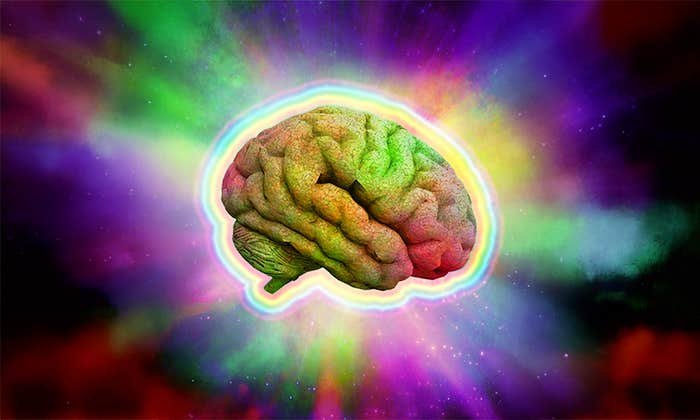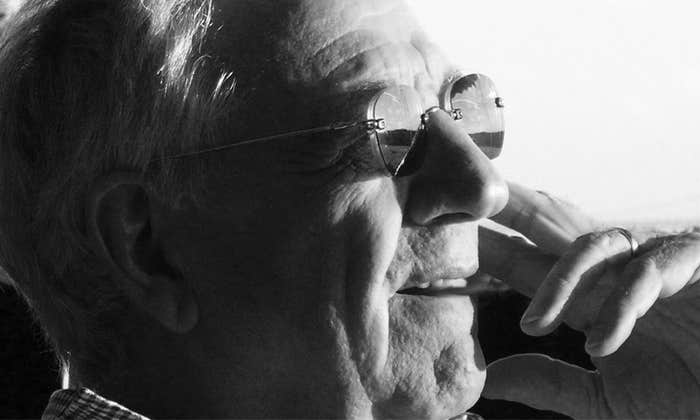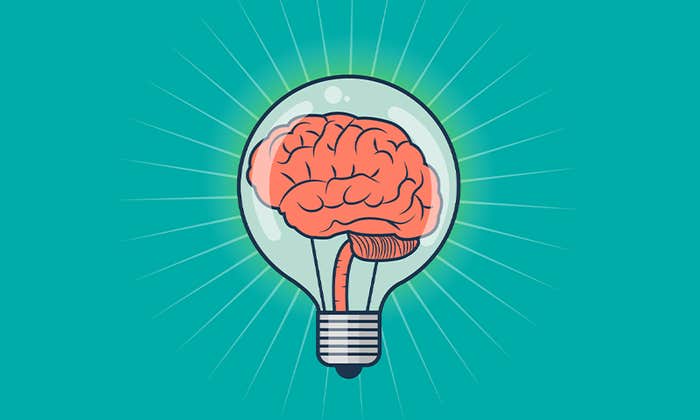In his most recent book, Consciousness: Confessions of a Romantic Reductionist, Christof Koch wrote that he has known only one genius: Francis Crick, co-discoverer of the structure of the DNA molecule. “In a lifetime of teaching, working and debating with some of the smartest people on the planet, I’ve encountered brilliance and high achievement, but rarely true genius,” writes Koch. “Francis was an intellectual giant, with the clearest and deepest mind of anyone I have ever met.”
During an interview with Koch at the Allen Institute for Brain Science, where he is chief scientific officer, we asked him to expand on his remarks about Crick. In his answers, seen in the video below, Koch described an idea that he and Crick advanced a decade ago: that a thin brain structure called the claustrum may act as “the conductor of the cortical symphony,” integrating information from disparate brain regions. A recent study of an epileptic patient seems to support their idea that the claustrum could be “one of the key places for consciousness to occur.”

Transcript
What made Francis Crick a genius? [0:02]
CK: Well, he had this ability to ask questions, and to look at questions that people had asked before, and answers they’d given, in a new way. I think that’s partly what genius is. If it is something simple that defines them, it is that they can look at an age-old question, or they can look at an answer, and just look at it in a new way and see—they can draw upon analogies from other fields of study and see—that if you just look at it in a different way, you can create something new that will help explain something that previously was inexplicable.
So it’s a combination of having this creative force to think of something new—which is very rare of course: Most of the time when we think of something “new,” it’s something that we heard somewhere else and we transform it. So the occasional attempt really to see something new, and then combined with an ability to see an old question or an old answer in a new light. And so, time and again, he took something that people previously had gone over and he says Well, what about this? or Couldn’t it be like that? And you say Gee, I read the same thing, why didn’t I think of it in the way he did? And afterwards, very often, it’s fairly obvious, once it’s pointed out to you.
What did he point out to you that you hadn’t seen yourself? [1:22]
CK: Yes, so there’s a famous paper—in fact his very last paper that he wrote—he dictated it two days before he went into the hospital. He called me up and said, “I’m on the way to the hospital. Don’t worry, I’ll dictate the changes to our paper in the hospital.” And then, in fact, on the day he did die, he dictated, he gave some correction to [a] secretary and hallucinated a discussion with me about it.
So here the idea is that there’s a particular part of the brain called the claustrum. It’s underneath—it’s yea big—it’s underneath the cortex, it’s on this [right] side and on this [left] side, and it has a very unique anatomical structure. And he said—and this is the first time anybody had done this—he said well the structure’s really very, very unique. It’s connected to every other part of [the] cortex and couldn’t this be one of the key places for consciousness to occur. He thought of this claustrum as a little bit like the conductor of the cortical symphony. You have the different regions of the cortex that are involved in color perception, and in smell, and in location perception, and in orientation, and then sound. But then you need something that can corner that can integrate all of this information. And he surmised that this particular part of the brain, about which we know very little, that this might be its principal function.
And just recently there was a beautiful experiment that, at least in one patient, it seems to confirm that there is something very true about this notion.
So could the claustrum be a kind of on-off switch for consciousness? [3:03]
CK: Well, so that study showed that, under some conditions, that there is such a switch. And it made it more plausible that the claustrum—this pretty much neglected structure—may have a key function to play in it. So it encouraged those of us who think that claustrum is an important part of the brain.
If there was damage to the claustrum, would we lose consciousness? [3:29]
CK: I doubt it. I mean, you have to remember this is one case, a part of one patient, she’s epileptic so her brain is not normal. And furthermore there was this electrode placed into that brain, which, of course, is not the case in you or me. So no, one would presuppose that if particular parts of the structure were damaged in, let’s say, me, I might be unable to perceive certain aspects or I would have difficulties fusing my visual information with my auditory. For example, I hear you and I see your lips move right at the same time and they’re synchronized. So I would suspect—that was actually our thought—that it’s involved in this cross-modality forms of conscious integration. What is very surprising in this patient [is] that every time you stimulate her, her eyes stare ahead, she comes to stop. And then when you stop the stimulation, she immediately comes back and she doesn’t report—when you ask her what went on in that time—she doesn’t report anything. It was like literally she went blank, like a zombie, for one second or two seconds or 10 seconds, however long the current lasted, and then she came back to herself. It is a very interesting finding that one would dearly like to replicate, probably first in animal experiments.


























